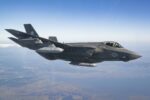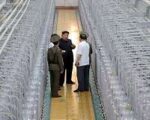India’s Light Combat Aircraft (LCA) program reached a major milestone on March 28 as the first Tejas Mk1A prototype successfully completed its maiden flight in Bengaluru. The upgraded variant of the indigenous fighter represents a significant leap in capability over the baseline Mk1. Coinciding with the event, Defence Minister Rajnath Singh inaugurated new production facilities at Hindustan Aeronautics Limited (HAL), aimed at ramping up output to meet Indian Air Force (IAF) demands.
Tejas Mk1A Takes Flight After Years of Development
The maiden flight of the Tejas Mk1A—aircraft number LA5033—was conducted at HAL’s Bengaluru facility and lasted approximately 18 minutes. According to HAL and the Ministry of Defence (MoD), all test parameters were met successfully. The aircraft was piloted by Group Captain K.K. Venugopal (Retd), Chief Test Pilot at HAL.
The Tejas Mk1A is an enhanced version of the original Tejas Mk1 and incorporates over 40 improvements based on IAF feedback. Key upgrades include:
- Israeli EL/M-2052 Active Electronically Scanned Array (AESA) radar
- Advanced electronic warfare suite with self-protection jammer and digital RWR
- Mid-air refueling probe for extended range
- Improved maintainability through modular line-replaceable units
- Capability to fire Beyond Visual Range (BVR) missiles including Astra-1/2 and Derby
The successful first flight marks a critical step toward initial deliveries scheduled for later this year. The IAF has ordered 83 Tejas Mk1As under a ₹48,000 crore (~$6 billion USD) contract signed in January 2021.
HAL Inaugurates New Assembly Lines to Accelerate Delivery
To meet production targets for the Tejas Mk1A fleet, Defence Minister Rajnath Singh inaugurated new production facilities at HAL’s Aircraft Division in Bengaluru during his visit. These include a state-of-the-art structural assembly hangar and an advanced avionics integration building.
The expanded infrastructure will enable HAL to produce up to 24 aircraft per year—double its previous capacity of around 12 per annum. This is crucial for delivering all ordered units by the mid-2030s and sustaining future orders.
The new lines are designed with modular tooling systems and digital manufacturing workflows intended to reduce assembly time per airframe while improving quality assurance metrics. HAL Chairman C.B. Ananthakrishnan emphasized that these upgrades align with India’s “Atmanirbhar Bharat” (self-reliant India) vision in defense manufacturing.
Strategic Importance for Indian Air Power Modernization
The induction of Tejas Mk1A is central to IAF’s plan to phase out aging MiG-21 Bison squadrons and restore squadron strength closer to sanctioned levels (~42 squadrons). As of early 2024, IAF operates two frontline squadrons equipped with earlier Tejas variants but requires more modern fighters amid regional threats from China and Pakistan.
The Mk1A bridges a capability gap until more advanced platforms like the indigenous fifth-generation Advanced Medium Combat Aircraft (AMCA) or foreign acquisitions under MRFA (Multi-Role Fighter Aircraft) are realized. It also complements heavier platforms like Rafale and Su-30MKI by offering lower operating costs and high sortie rates suitable for point defense roles.
Operationally, the AESA radar-equipped Mk1A will offer improved situational awareness and survivability in contested environments compared to its mechanically scanned predecessor. Its integration with indigenous weapons such as Astra air-to-air missiles further enhances sovereign combat capability.
Challenges Ahead: Testing, Certification & Supply Chain Maturity
Despite this milestone flight, several hurdles remain before full-rate production can commence:
- Flight Testing: The prototype must undergo extensive developmental trials covering envelope expansion, weapons firing validations, environmental testing across altitudes/temperatures, etc.
- Squadron Integration: Training infrastructure including simulators must be scaled alongside delivery timelines; initial operational clearance may take months post-delivery.
- Supply Chain Bottlenecks: While over 60% of components are sourced domestically—including composites from ADA/NAL—critical subsystems like engines (GE F404-IN20) remain imported pending local alternatives like Kaveri or future JV engines under development with Safran or Rolls-Royce.
A key concern remains timely certification from Centre for Military Airworthiness & Certification (CEMILAC), which is required before series production aircraft can be inducted into operational squadrons.
Bigger Picture: Indigenous Aerospace Ecosystem Maturing
The progress on Tejas Mk1A reflects growing maturity in India’s aerospace ecosystem led by DRDO labs such as ADA (Aeronautical Development Agency), DARE (Defence Avionics Research Establishment), NAL (National Aerospace Laboratories), private tier suppliers like Dynamatic Technologies and Alpha Design Technologies Ltd., as well as PSU integrators like BEL and BDL supplying avionics/weapons subsystems.
This ecosystem is expected not only to support follow-on variants such as LCA Navy Twin-Seater Trainer or LIFT variant but also feed into next-gen programs like AMCA Gen5 stealth fighter and TEDBF carrier-based fighter under development by ADA/DRDO/HAL consortiums.
If executed successfully within schedule constraints—and if export interest from countries such as Argentina or Egypt materializes—the LCA program could become a flagship model for Global South nations seeking affordable multirole fighters outside traditional Western/Russian suppliers.
Conclusion: A Turning Point for India’s Fighter Jet Ambitions?
The first flight of the Tejas Mk1A signals more than just technical progress—it underscores India’s intent to become self-sufficient in combat aviation while building industrial depth across design-to-delivery cycles. With enhanced capabilities now airborne and production capacity scaled up significantly, attention will shift toward timely certification milestones and sustained delivery rates over the next decade.
If successful operationalization follows this promising start, the LCA-Mk1A could become not only a backbone of IAF’s light fighter fleet but also serve as a springboard toward India’s broader aerospace ambitions—from AMCA stealth jets to potential exports across Asia-Africa-Latin America corridors seeking cost-effective airpower solutions amid tightening budgets worldwide.










